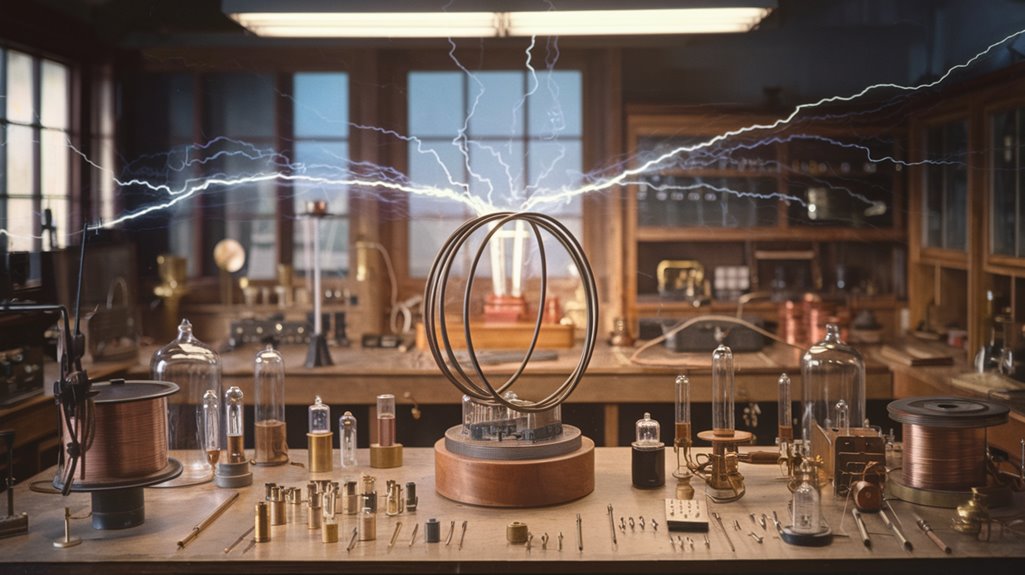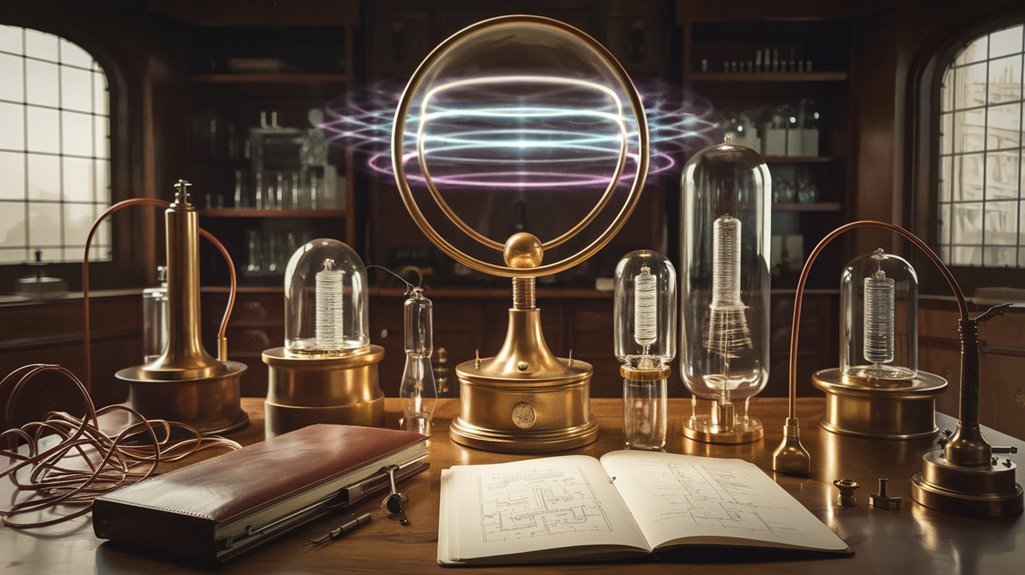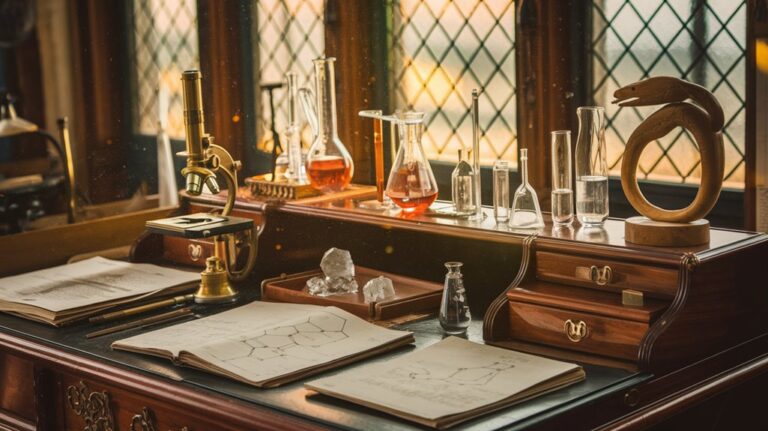Nikola Tesla: Separating the Man From the Myths
Have you ever wondered what's hiding behind the electric veil of Tesla's legend? You've probably heard the tales: death rays, free energy, and epic battles with Thomas Edison. But these popular stories often mask the real brilliance of one of history's most influential inventors. While his actual achievements revolutionized our world, the myths surrounding Tesla have grown larger than life. Let's separate the voltage from the static and discover who this remarkable scientist truly was.
The Real Tesla: Beyond Popular Culture
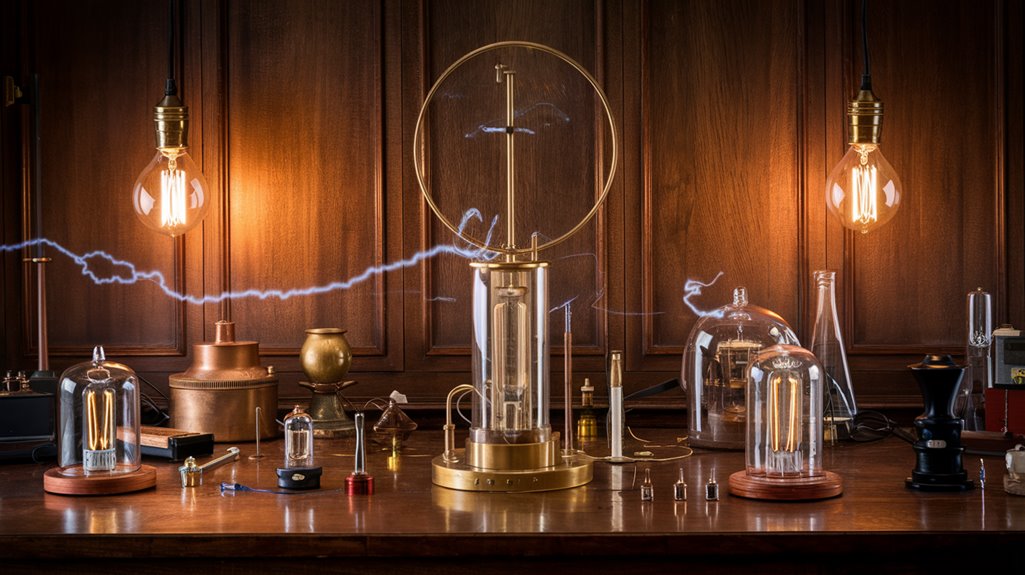
While popular culture often portrays Nikola Tesla as a mysterious and eccentric figure, his real story reveals a brilliant innovator shaped by diverse influences.
Tesla's upbringing in Croatia, with a priest father and an inventive mother, laid the foundation for his future achievements. You'll find that his mother's knack for creating household appliances sparked his early interest in innovation, while his father's eventual support guided him toward engineering after he survived cholera. His education at the Higher Real Gymnasium proved exceptional, as he managed to complete a four-year program in just three years.
Tesla's inspirations weren't limited to his family background. His remarkable ability to perform complex calculations mentally and his fascination with the Gramme dynamo during his studies showcase a methodical, scientific mind rather than the mystical character often depicted in media.
His groundbreaking ideas, like the AC system, emerged from rigorous study and practical experience rather than supernatural insight. His time at the Telephone Exchange in Budapest proved crucial to his development, as it was here where he first conceptualized the induction motor that would revolutionize electricity distribution.
Breaking Down Tesla's Most Significant Inventions
Behind Tesla's methodical mind lay a remarkable collection of innovations that changed the course of human civilization.
You'll find his genius most evident in his revolutionary AC Power system and the development of the induction motor, which remain cornerstones of modern electrical distribution. Forty basic patents secured his position as the master of AC technology.
Tesla's most groundbreaking inventions include:
- The Tesla Coil, transforming high-frequency electrical power
- Early wireless technology demonstrations and remote control systems
- Pioneering X-ray innovations and shadowgraph techniques
- Unique turbine design utilizing fluid dynamics
When you examine his work in high-frequency experimentation, you'll discover how it led to developments in radio technology, fluorescent lighting, and even early concepts of radar.
His remote-controlled boat demonstration in 1898 proved particularly visionary, showing how wireless control could revolutionize technology long before the digital age.
The development of the polyphase AC system in 1888 enabled Tesla to achieve his vision of powering entire cities through efficient electrical distribution.
The Truth Behind Tesla's Rivalries and Conflicts
Despite their shared passion for electrical innovation, Nikola Tesla and Thomas Edison became fierce rivals in what history would call the "War of the Currents."
At the heart of their conflict lay competing visions for America's electrical future – Tesla's alternating current (AC) system versus Edison's direct current (DC) approach.
The rivalry dynamics extended beyond technical debates. Edison, backed by J.P. Morgan, launched aggressive media campaigns and staged public electrocutions to discredit AC power. Edison's crusade against AC reached a dark milestone when he orchestrated the death of Topsy, a circus elephant electrocuted in 1903.
Tesla, supported by Westinghouse, responded with impressive demonstrations like illuminating the 1893 Chicago World's Fair. Though they were competitors, Tesla and Edison maintained a level of mutual professional respect throughout their careers.
The innovation impact of this conflict proved decisive when Tesla's AC system demonstrated superior efficiency in long-distance power transmission.
Eventually, even Edison's General Electric had to license AC technology from Westinghouse, marking a clear victory for Tesla's vision of electrical distribution.
Debunking Common Tesla Misconceptions
The popular mythology surrounding Nikola Tesla often overshadows his genuine accomplishments.
You'll find that many common beliefs about the inventor are simply untrue, from his supposed rivalry with Edison to claims about his mysterious inventions.
Despite his excellent education at the Austrian Polytechnic School, Tesla wasn't the sole inventor of AC power or radio technology. While he made significant contributions to modern electrical engineering, he operated largely outside traditional academic circles.
His later years were marked by declining health, which may have contributed to some of his more fantastical claims. The first alternating current generator was created by Hippolytle Pixii in 1832, decades before Tesla's innovations.
Here are the most persistent myths you should know about:
- He didn't discover "free energy" or create a death ray
- Edison wasn't his mortal enemy; they maintained professional respect
- The FBI didn't steal his secret inventions
- His death at 86 was from natural causes, not murder
When examining Tesla's legacy, it's essential to separate scientific fact from popular fiction.
Tesla's Scientific Legacy: What Actually Matters
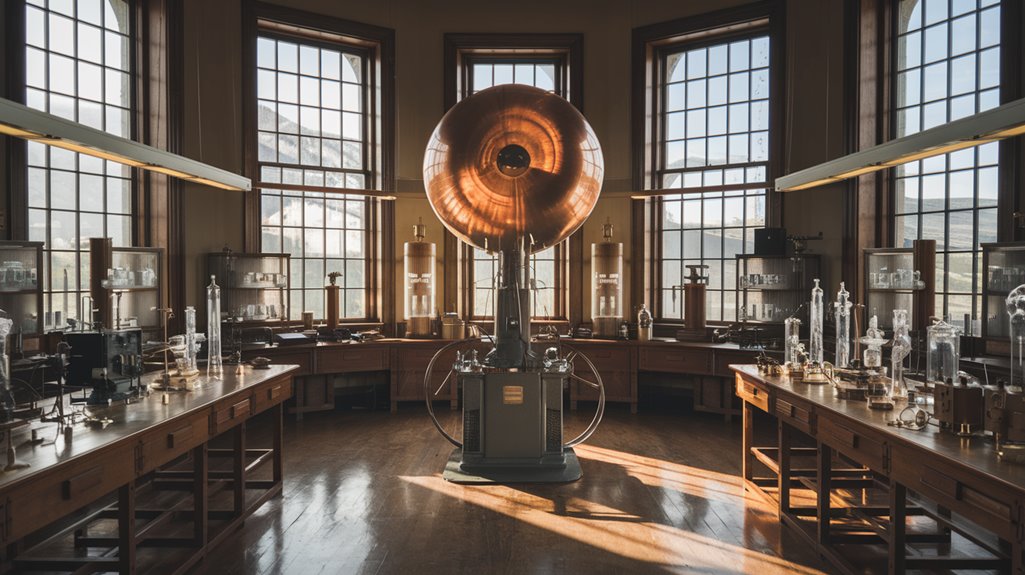
While popular culture often focuses on Tesla's enigmatic personality, his most significant contributions revolutionized how we generate and distribute electrical power.
His development of AC power systems and Tesla's theoretical contributions to wireless technology continue to shape our modern world.
You'll find Tesla's collaborative efforts with George Westinghouse, particularly in implementing the Niagara Falls Power Plant, demonstrated AC power's practical superiority. After securing $150,000 from Morgan, Tesla worked tirelessly to advance his wireless power transmission vision.
His work on the AC induction motor and polyphase system created the foundation for efficient power distribution we still use today. His innovative system operating on three-phase, 60-cycle current became the standard for power delivery across North America.
Beyond electricity, Tesla's innovations in radio technology, remote control systems, and lighting solutions proved visionary.
The Tesla Coil remains relevant in modern applications, while his research into terrestrial stationary waves anticipated future developments in wireless power transmission.

